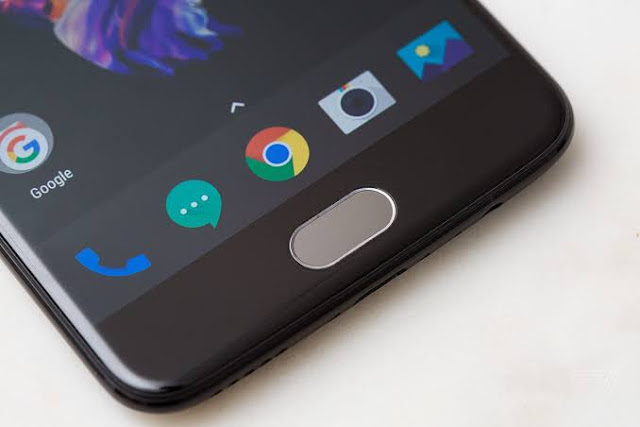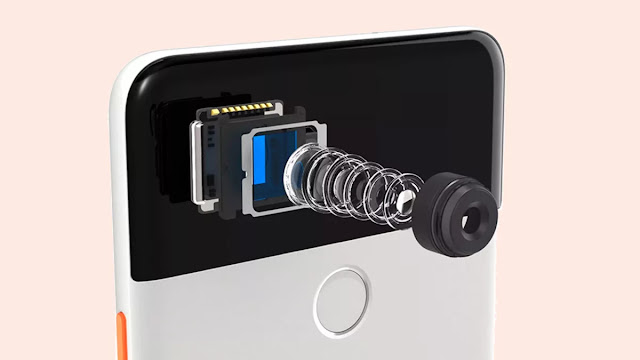OnePlus 3 in 2018. Still worth?
OnePlus 3 was launched on 14th June 2016 in India. It had great specs for the price that it was offered in. To recall, OnePlus 3 was launched with
A Snapdragon 820 SoC under the Hood which is a Quad-core chipset with Qualcomm's two custom Kryo cores and two energy-efficient cores. It has a 16 Megapixel rear camera with an LED flash and a front 8 Megapixel shooter for selfies.
Design:
OnePlus 3 is crafted from a single block of aluminium feels really good to hold and is quite durable.
The antenna lines are visible on the top and bottom with a OnePlus logo at the Back.
The camera bump is enormous and needs an extra amount of care from the user else the lens would end up getting scratched pretty easily.
The front of the smartphone uses an older 16:9 aspect ratio meaning the bezels are large. There's a front-mounted fingerprint scanner for unlocking the phone. The power button is located on the right side of the phone. Whereas at the left there's an alert slider and the volume rockers.
Software:
Now, this is where things start getting interesting. OnePlus has its own custom UI named Oxygen OS. OnePlus 3 is currently running on Oxygen OS 5.0.6 on top of Android 8.0 Oreo and OnePlus has promised to release Pie in the First Quarter of 2019. It's surprising to see OEM's giving more than two major Android updates. Camera2Api is also enabled by default, this means that Google camera ports can be installed directly without rooting the phone. Oxygen OS is excellent in terms of ram management, and the apps don't reload while they are in the background. There's pretty much everything in Oxygen OS that any other custom skins offer, from hiding apps to change the themes and icons with inbuilt app lock which was not the case with my Mi A1. Gestures work very well, and the pocket mode is yet another great feature of Oxygen OS, it disables the fingerprint reader when your phone is in the pocket. Hence it saves the battery.
Performance:
OnePlus 3 is no slouch when it comes to performance. The Snapdragon 820 is blazingly fast and performs many day-to-day tasks with a breeze. I ran PUBG and Modern Combat 5 on it, and the games were playable in HD graphics with minimal frame drops. The phone heats up quite a bit, and in certain circumstances, the phone heats up a lot, making it difficult to hold.
Display:
OnePlus 3's resolution is 1920*1080p. It has an AMOLED panel which OnePlus calls "Optic AMOLED" meaning the blacks are black and whites are white. AMOLED panel also helps to save battery by switching off the pixels in the black area of the background or wallpaper. This, in turn, means that the user will be able to get extended battery life. The difference will not be huge, though. The sunlight legibility is excellent under direct sunlight.
Battery:
OnePlus 3 has a 3000mAh battery. So far, it is the only thing that has disappointed me. Though I was not expecting too much from a two-year phone, it still gave me good results sometimes and sometimes the results were very horrible. The Phone has Dash Charging Technology which charges the phone in one hour(Roughly) from 10-100%. On average, I was able to get a three and a half-hour of screen-on-time, which includes Browsing web, Using Telegram, WhatsApp, Facebook, and Youtube.
Camera:
As I mentioned earlier, OnePlus 3 has a 16 Megapixel rear camera. It is a Sony IMX 298 sensor with an f/2.0 aperture with OIS(Optical Image Stabilization) and a 1.12 micron sized pixels. It has Auto HDR. It can record 4K videos at 30fps and 720p videos at 120fps slow motion. The images captured by it have useful details, balanced contrast and sharpness are excellent. It has a fully-fledged manual mode too. The front camera is an 8 Megapixel shooter with Sony IMX 179 sensor which has EIS(Electronic Image Stabilization) with a 1.4-micron sized pixels it can record 1080p at 30fps. I'm enclosing some images below which were shot in HDR mode.
I didn't turn on the watermark in some photos. I assure you that these images were also taken using the Stock Camera app.
Summing up:
It has all the necessary sensors that today's smartphones have including the NFC. There's Dirac Audio for speakers, and they sound good but not loud enough. The Oxygen Os is excellent, the cameras are unique too. Should you but this in 2018? The answer is, Yes! Definitely get it if you don't bother about the battery life. Snapdragon 820 means there will be a lot of custom ROM support in the future too. Flagship killers of 2016 are a lot better than midrange devices of 2018.
Thanks for Reading! Have a wonderful day!!
A Snapdragon 820 SoC under the Hood which is a Quad-core chipset with Qualcomm's two custom Kryo cores and two energy-efficient cores. It has a 16 Megapixel rear camera with an LED flash and a front 8 Megapixel shooter for selfies.
Design:
OnePlus 3 is crafted from a single block of aluminium feels really good to hold and is quite durable.
The antenna lines are visible on the top and bottom with a OnePlus logo at the Back.
The camera bump is enormous and needs an extra amount of care from the user else the lens would end up getting scratched pretty easily.
The front of the smartphone uses an older 16:9 aspect ratio meaning the bezels are large. There's a front-mounted fingerprint scanner for unlocking the phone. The power button is located on the right side of the phone. Whereas at the left there's an alert slider and the volume rockers.
Software:
Now, this is where things start getting interesting. OnePlus has its own custom UI named Oxygen OS. OnePlus 3 is currently running on Oxygen OS 5.0.6 on top of Android 8.0 Oreo and OnePlus has promised to release Pie in the First Quarter of 2019. It's surprising to see OEM's giving more than two major Android updates. Camera2Api is also enabled by default, this means that Google camera ports can be installed directly without rooting the phone. Oxygen OS is excellent in terms of ram management, and the apps don't reload while they are in the background. There's pretty much everything in Oxygen OS that any other custom skins offer, from hiding apps to change the themes and icons with inbuilt app lock which was not the case with my Mi A1. Gestures work very well, and the pocket mode is yet another great feature of Oxygen OS, it disables the fingerprint reader when your phone is in the pocket. Hence it saves the battery.
Performance:
OnePlus 3 is no slouch when it comes to performance. The Snapdragon 820 is blazingly fast and performs many day-to-day tasks with a breeze. I ran PUBG and Modern Combat 5 on it, and the games were playable in HD graphics with minimal frame drops. The phone heats up quite a bit, and in certain circumstances, the phone heats up a lot, making it difficult to hold.
Display:
OnePlus 3's resolution is 1920*1080p. It has an AMOLED panel which OnePlus calls "Optic AMOLED" meaning the blacks are black and whites are white. AMOLED panel also helps to save battery by switching off the pixels in the black area of the background or wallpaper. This, in turn, means that the user will be able to get extended battery life. The difference will not be huge, though. The sunlight legibility is excellent under direct sunlight.
Battery:
OnePlus 3 has a 3000mAh battery. So far, it is the only thing that has disappointed me. Though I was not expecting too much from a two-year phone, it still gave me good results sometimes and sometimes the results were very horrible. The Phone has Dash Charging Technology which charges the phone in one hour(Roughly) from 10-100%. On average, I was able to get a three and a half-hour of screen-on-time, which includes Browsing web, Using Telegram, WhatsApp, Facebook, and Youtube.
Camera:
As I mentioned earlier, OnePlus 3 has a 16 Megapixel rear camera. It is a Sony IMX 298 sensor with an f/2.0 aperture with OIS(Optical Image Stabilization) and a 1.12 micron sized pixels. It has Auto HDR. It can record 4K videos at 30fps and 720p videos at 120fps slow motion. The images captured by it have useful details, balanced contrast and sharpness are excellent. It has a fully-fledged manual mode too. The front camera is an 8 Megapixel shooter with Sony IMX 179 sensor which has EIS(Electronic Image Stabilization) with a 1.4-micron sized pixels it can record 1080p at 30fps. I'm enclosing some images below which were shot in HDR mode.
I didn't turn on the watermark in some photos. I assure you that these images were also taken using the Stock Camera app.
Summing up:
It has all the necessary sensors that today's smartphones have including the NFC. There's Dirac Audio for speakers, and they sound good but not loud enough. The Oxygen Os is excellent, the cameras are unique too. Should you but this in 2018? The answer is, Yes! Definitely get it if you don't bother about the battery life. Snapdragon 820 means there will be a lot of custom ROM support in the future too. Flagship killers of 2016 are a lot better than midrange devices of 2018.
Thanks for Reading! Have a wonderful day!!














Nice ..
ReplyDeleteNice ..
ReplyDeleteI updated the Post! Thanks for your Suggestion!
ReplyDeleteGud one!!
ReplyDeleteAait kiraak bhai
ReplyDelete👌
ReplyDeleteNice one boi!
ReplyDeleteWaiting for Letv max 2 review 😍
ReplyDelete